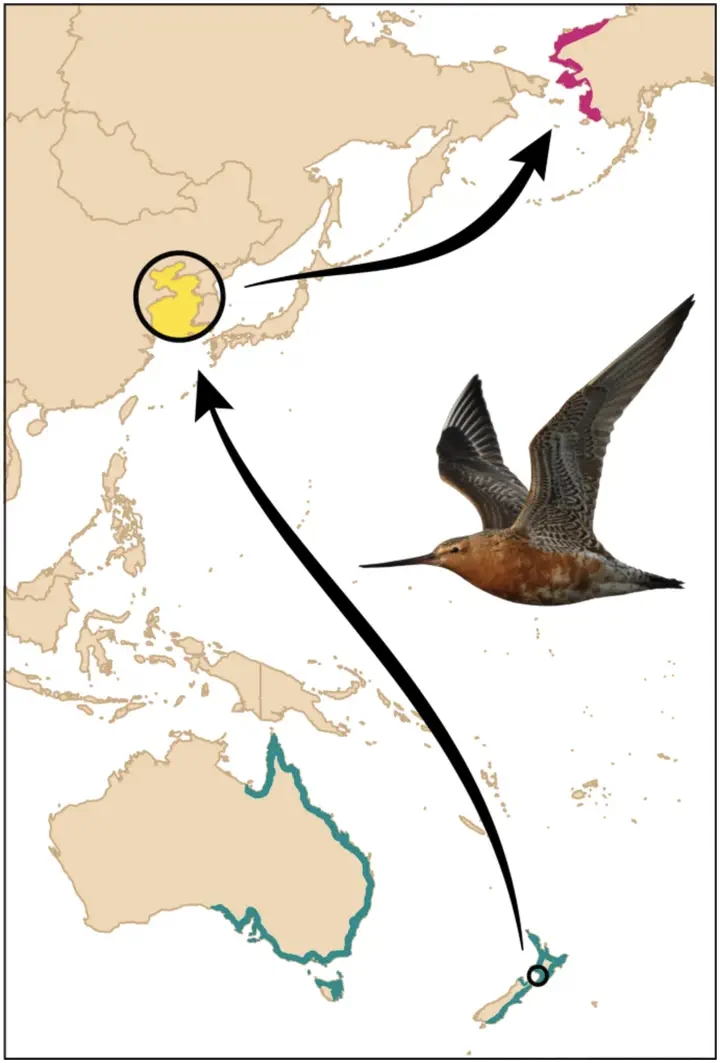Advancement in long-distance bird migration through individual plasticity in departure

Abstract
Globally, bird migration is occurring earlier in the year, consistent with climate-related changes in breeding resources. Although often attributed to phenotypic plasticity, there is no clear demonstration of long-term population advancement in avian migration through individual plasticity. Using direct observations of bar-tailed godwits (Limosa lapponica) departing New Zealand on a 16,000-km journey to Alaska, we show that migration advanced by six days during 2008–2020, and that within-individual advancement was sufficient to explain this population-level change. However, in individuals tracked for the entire migration (50 total tracks of 36 individuals), earlier departure did not lead to earlier arrival or breeding in Alaska, due to prolonged stopovers in Asia. Moreover, changes in breeding-site phenology varied across Alaska, but were not reflected in within-population differences in advancement of migratory departure. We demonstrate that plastic responses can drive population-level changes in timing of long-distance migration, but also that behavioral and environmental constraints en route may yet limit adaptive responses to global change.